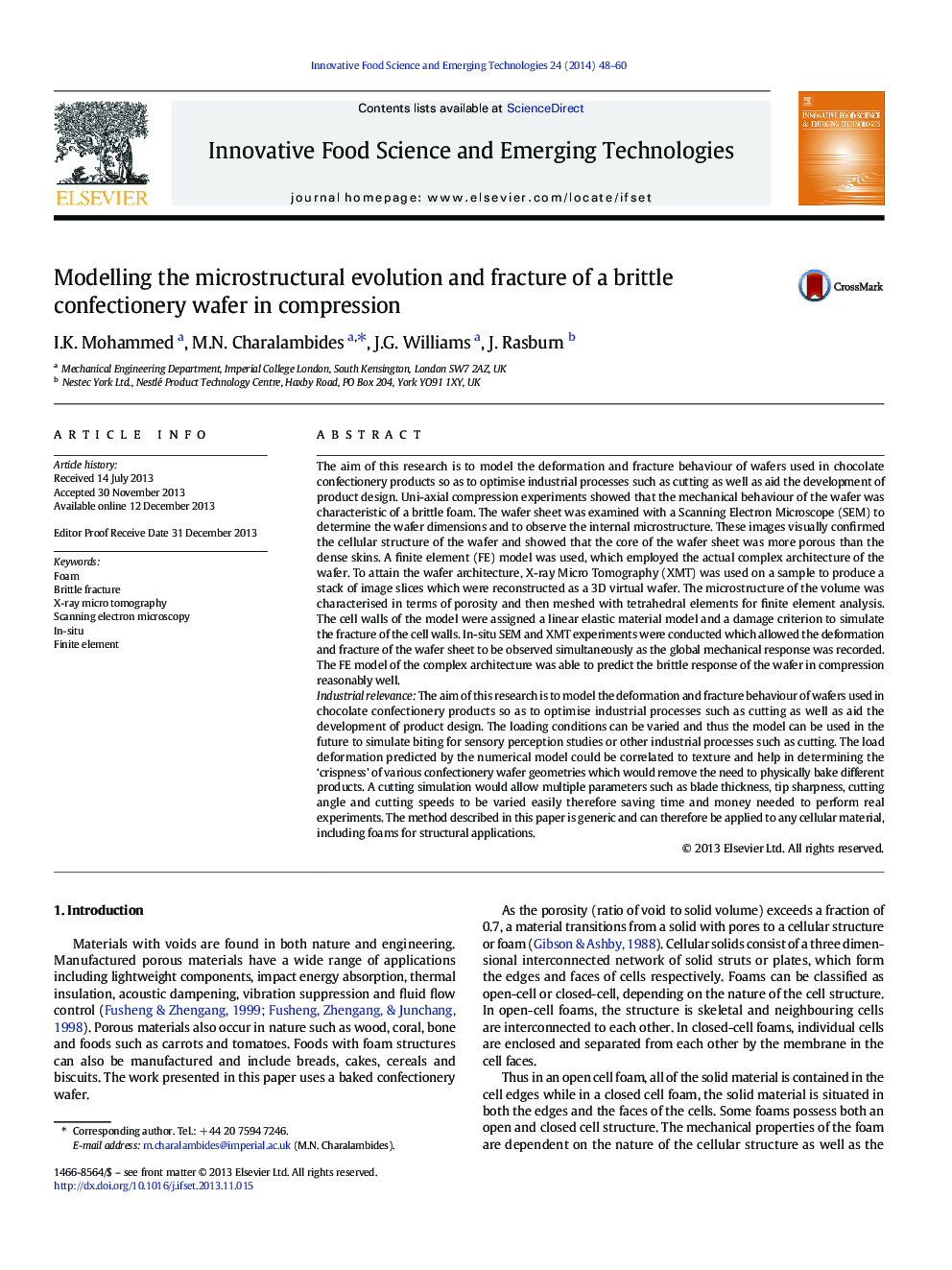| کد مقاله | کد نشریه | سال انتشار | مقاله انگلیسی | نسخه تمام متن |
|---|---|---|---|---|
| 2086718 | 1545542 | 2014 | 13 صفحه PDF | دانلود رایگان |
• SEM and XMT were used to characterise the microstructure.
• In-situ SEM and XMT tests showed the microstructural evolution of the deformation.
• The solid modulus and rupture stress were calculated using analytical foam equations.
• A meshed 3D volume of the wafer architecture was generated from the XMT image slices.
• The FE model accurately simulated the brittle fracture of the wafer in compression.
The aim of this research is to model the deformation and fracture behaviour of wafers used in chocolate confectionery products so as to optimise industrial processes such as cutting as well as aid the development of product design. Uni-axial compression experiments showed that the mechanical behaviour of the wafer was characteristic of a brittle foam. The wafer sheet was examined with a Scanning Electron Microscope (SEM) to determine the wafer dimensions and to observe the internal microstructure. These images visually confirmed the cellular structure of the wafer and showed that the core of the wafer sheet was more porous than the dense skins. A finite element (FE) model was used, which employed the actual complex architecture of the wafer. To attain the wafer architecture, X-ray Micro Tomography (XMT) was used on a sample to produce a stack of image slices which were reconstructed as a 3D virtual wafer. The microstructure of the volume was characterised in terms of porosity and then meshed with tetrahedral elements for finite element analysis. The cell walls of the model were assigned a linear elastic material model and a damage criterion to simulate the fracture of the cell walls. In-situ SEM and XMT experiments were conducted which allowed the deformation and fracture of the wafer sheet to be observed simultaneously as the global mechanical response was recorded. The FE model of the complex architecture was able to predict the brittle response of the wafer in compression reasonably well.Industrial relevanceThe aim of this research is to model the deformation and fracture behaviour of wafers used in chocolate confectionery products so as to optimise industrial processes such as cutting as well as aid the development of product design. The loading conditions can be varied and thus the model can be used in the future to simulate biting for sensory perception studies or other industrial processes such as cutting. The load deformation predicted by the numerical model could be correlated to texture and help in determining the ‘crispness’ of various confectionery wafer geometries which would remove the need to physically bake different products. A cutting simulation would allow multiple parameters such as blade thickness, tip sharpness, cutting angle and cutting speeds to be varied easily therefore saving time and money needed to perform real experiments. The method described in this paper is generic and can therefore be applied to any cellular material, including foams for structural applications.
Journal: Innovative Food Science & Emerging Technologies - Volume 24, August 2014, Pages 48–60
